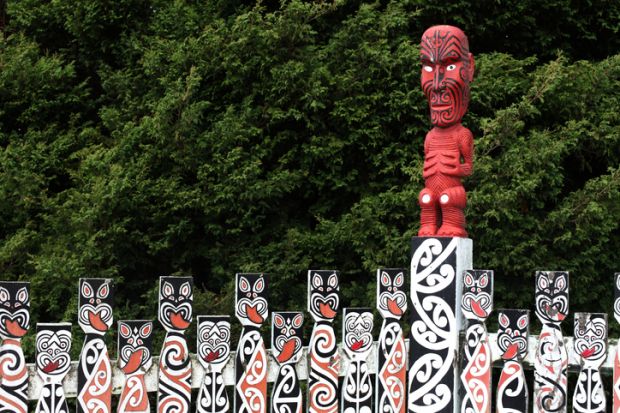As Nelson Mandela said, “Education is the most powerful weapon which you can use to change the world.” Education is the most potent transformative tool we have to empower future generations to meet the challenges of a rapidly changing world.
However, educational institutions’ power to build a more sustainable, resilient and peaceful future depends on purposeful intent to advance public good and social justice. Otherwise, as history shows, educational systems can reproduce inequality, rather than close the gap.
My life experience in South Africa – where I was, most recently, vice-chancellor of the University of Pretoria – forged my stance against discrimination and for social equality. When I moved to New Zealand, to lead Te Whare Wānanga o Waitaha | the University of Canterbury, I found an education system with much to admire, reflecting innovation in many areas. But there are also longstanding, persistent gaps in educational attainment.
Unicef’s 2018 Innocenti Report Card, ranked New Zealand 33rd out of 38 wealthy countries for educational equality. Māori students were falling significantly behind on every outcome measure, including secondary school retention rates, educational achievements, and rates of youth in education, employment or training. Furthermore, Māori and Pacific children were disproportionately represented in the group that underachieved and were more likely to be excluded or expelled from school, exacerbating inequality.
Inequality in educational achievement is one of the major obstacles to meeting Aotearoa New Zealand’s goal of becoming a truly bicultural nation, as promised in our founding document, Te Tiriti o Waitangi – the treaty signed between Māori and the British settlers in 1840. Today, two government strategies – the Statement of National Education and Learning Priorities and the Tertiary Education Strategy – endeavour to direct educational institutions towards the activities that make the biggest difference, especially for Māori and Pacific students. Linked to this, our education system requires reporting on the success of these students.
The big question is: which actions will make the biggest difference? While my university, Te Whare Wānanga o Waitaha | the University of Canterbury (UC), aspires to provide an excellent education that is equitable and accessible to all, how do we accomplish this in a historically inequitable and unfair society?
My university is proud to be building on a strong history of inclusive education. Since its foundation in 1873, the University of Canterbury has counted among its graduates the first woman to receive an honours degree in the British Empire (Helen Connon in 1881), and the first Māori graduate (Āpirana Ngata in 1893). The Māori politician Sir Āpirana Ngata graces one of the nation’s banknotes ($50), alongside fellow Canterbury alumni Nobel laureate Lord Ernest Rutherford ($100) and world-leading suffragist Kate Sheppard ($10). However, the modern University of Canterbury aspires to be more than a provider of illustrious historical figures. As its 150th anniversary approaches in 2023, our institution has sharpened its focus on being a place of learning that values our differences and aspires to conduct research and teaching that is accessible to all. To this end, we need to re-evaluate our academic system of meritocracy.
Across tertiary education in New Zealand, we see a 17 per cent gap in six-year degree completion rates for Māori and Pacific students, compared with other students. All our educational institutions have initiatives to try to bridge this gap. But the challenge is to bring about transformational change that will produce positive intergenerational outcomes within the foreseeable future.
Merit is not a rarefied, acontextual attribute. I believe equity and inclusion are a mindset, not a trade-off. Merit and equity are not mutually exclusive concepts but are, in fact, closely connected. We need to examine what constitutes merit and how our measures of it are impacted by our culture, our context, the place we live and who we serve.
Our relationships with mana whenua (Māori) are integral to meeting our aspirations. We are committed to working towards an education system that includes te ao Māori (the Māori worldview) and mātauranga (Māori knowledge – including Māori perspectives, creativity and cultural practices), and upholding the country’s founding treaty.
Building strong relationships with the Ngāi Tūāhuriri hapū (local clan) and wider Ngāi Tahu iwi (the principal tribe and treaty signatory for the South Island of New Zealand) is fundamental to our ambition to close the educational attainment gap. Unlike policies that merely address the consequences, education can tackle the sources of inequality of opportunity, creating a more level playing field for people of all ages to acquire the skills that power better jobs and better lives.
Our close partnership and enduring relationship with our treaty partners is fundamental to continuing our journey together, engaging our Māori community and working towards equitable education in Aotearoa New Zealand.
Cheryl de la Rey is vice-chancellor of the University of Canterbury. She will speak on this theme at Times Higher Education’s World Academic Summit in New York 10-12 October. She will join a panel with C. Raj Kumar, founding vice-chancellor of O.P. Jindal Global University; Sir Anton Muscatelli, principal and vice-chancellor of the University of Glasgow; and Gabrielle Starr, president of Pomona College.
Register to continue
Why register?
- Registration is free and only takes a moment
- Once registered, you can read 3 articles a month
- Sign up for our newsletter
Subscribe
Or subscribe for unlimited access to:
- Unlimited access to news, views, insights & reviews
- Digital editions
- Digital access to THE’s university and college rankings analysis
Already registered or a current subscriber? Login








